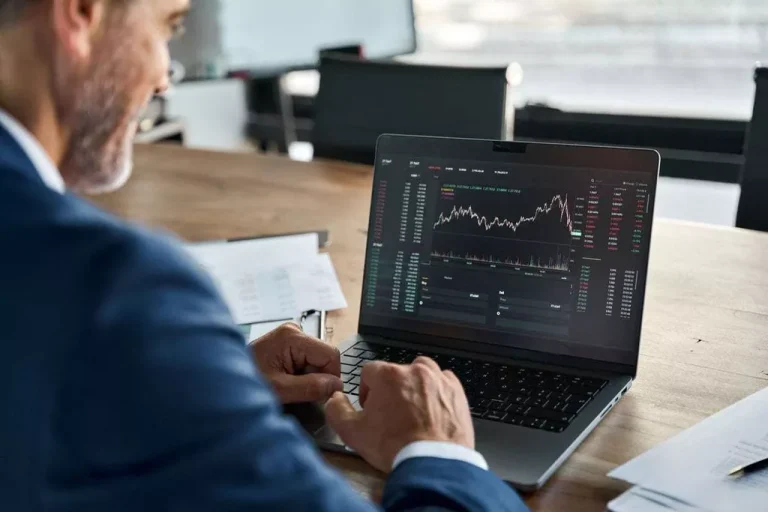A-book Vs B-book Brokers: What’s The Distinction
These models are only tools for doing business, and the extent to which you gain personally from them is solely dependent in your capability to use them in an expert method. An intermediate comparative evaluation for 3 main NDD models (I is not going to include DD and B-Book models without passing orders to the external market) is offered within the desk under. In some circumstances, brokers can even add an additional mark up on the costs to make an additional buck. Rates, phrases, services on third-party websites are topic to alter without notice. We may be compensated however this should not be seen as an endorsement or recommendation by TradingBrokers.com, nor shall it bias our broker what is a book broker critiques. While we try to keep information correct and up to date, things can change with out notice and due to this fact you must do your individual analysis.
A-book Vs B-book Forex Brokers (examples And Professionals & Cons)
So your orders will more often than not, be shipped off to the interbank market. Think About being in a situation where you consistently trade 5 heaps on a commodity CFD and on every commerce, you’re banking 1000’s of dollars persistently. On the other finish, there are the uncommon entities generally identified as A-book brokers. These brokers supposedly ship all of your trades to the actual interbank market and cost a small charge for this service. Nonetheless, they’re as elusive as unicorns and rarely encountered in the wild.
The Draw Back Of A E-book – Spreads
A-Book brokers make a consistent revenue from transaction charges or unfold markups, thriving on their clients’ successful operations. Conversely, B-Book brokers can make substantial earnings from the losses of traders, utilizing techniques like adjusting quotes or monitoring consumer stops closely. This strategy may offer higher returns however raises severe moral questions. Whereas B-Book brokers can provide fast execution and enticing spreads, the conflict of interest inherent in this mannequin is important. As A End Result Of the dealer serves because the counterparty to the trade, the earnings of the dealer equate to the losses of the dealer, and vice versa.

High-risk trades are dealt with internally (B-Book), while low-risk trades are routed to liquidity suppliers (A-Book). While B-Book brokers would possibly provide faster commerce execution and reduced buying and selling fees, A-Book brokers are most well-liked for his or her transparency and superior trading circumstances. When selecting one of these models, traders should contemplate their buying and selling aims and preferences.
- The liquidity suppliers can embrace main banks, financial establishments, hedge funds, and other market individuals that continually buy and sell currencies.
- It’s typically inconceivable for a dealer to know definitively whether they have been categorized as A-Book or B-Book by their Foreign Exchange dealer.
- The must rely on liquidity providers also means spreads may change, especially throughout major information occasions.
- Nevertheless, as a end result of commissions and spreads are included in this association, purchasers would possibly pay greater prices.
- This setup aids brokers in balancing income technology and risk.
- This strategy is most well-liked for its transparency and alignment of pursuits between the broker and the client.
Have you ever had to take care of the forex A-book/B-book models when finding out the brokerage industry? Or perhaps you’ve been debating which of these models to use in your own brokerage agency. A-Book brokers are essential to the foreign exchange market as a outcome of they provide retail traders with a good setting. Their enterprise strategy is centred on balancing the broker’s and merchants‘ income to encourage profitable trading. On the one hand, such a model encourages competitors between liquidity suppliers, thus narrowing the unfold and reducing the fee charges.
In this case, relying on varied parameters and your risk profile, the broker can select to cross your orders as STP or to deal with them in-house. Throughout common market hours, you presumably can see the spreads on such currency pairs tighten. However, throughout off-market hours such as the early Asian trading session, you’ll be able to see the spreads widen. In recent occasions, more and more traders have started to pay attention to how their trades are booked or processed. We said that brokers may market themselves as pure ECN/STP or no matter, but they are more than likely a B-book or a hybrid dealer. Due To This Fact, the best advice we can give you is that no matter which broker you discover yourself trading with, you need to be snug with them.
How A-book Forex Brokers Operate

This diversity permits them to internally offset as many trades as potential. By matching opposing positions among their very own shoppers, they can effectively neutralize a few of the market risks. For instance, if one consumer is shopping for a certain currency pair, and one other is selling the same pair, the broker can match these trades internally. This inner offsetting reduces the broker’s publicity to market actions since the positive aspects and losses amongst their client base can cancel one another out. In the B-Book model Yield Farming , brokers do not hedge or offset their clients’ trades with third parties.
Each model has its own traits and implications for merchants. In this article, we are going to explore the differences between A-Book and B-Book brokers, providing an outline of their features, advantages, and drawbacks. By understanding these distinctions, you could be higher outfitted to choose the brokerage model that aligns with your buying and selling objectives and preferences. So, let’s dive into the world of A-Book and B-Book brokers to realize priceless insights into their trading approaches.
The point is that market makers do fulfill A-book orders regularly. To summarise every little thing we’ve mentioned, it is critical to grasp broker models in the Foreign Exchange buying and selling world. A-Book brokers present better circumstances and transparency, while the B-Book model provides potentially higher profitability. Both new and veteran brokerages can find a middle ground with hybrid fashions.
The spreads could be very tight when liquidity is excessive but throughout low volume durations, the spreads can range considerably. With an A e-book dealer, the foreign exchange dealer does not act as your counterparty. For many traders, that is what matters the most – to find a way to commerce with a dealer that doesn’t have a battle of interest when processing your orders. The irony of the complete factor is that as a dealer, you have no idea https://www.xcritical.in/ what e-book your trade is on. If you are a persistently profitable trader, likelihood is that the foreign exchange dealer would not take probabilities trying to commerce towards you.
The rules in your jurisdiction could significantly influence your selection of dealer mannequin. A-Book, B-Book, or hybrid model criteria or limitations may be particular to certain regulators. However ECN/STP brokers cannot be known as pure ECN brokers, since they don’t give the trader details about the Depth of Market (its liquidity). To perceive which dealer you might be working with, you should place a Restrict order and it ought to be displayed in the Depth of Market. That is, the A-Book broker can’t compete with the B-Book one in phrases of prices.

















